For some, the Tommi Makinen edition represents the best of the ten generations of Mitsubish’s Lancer Evolution. We drive the now rare and appreciating homologation special.
Mitsubishi’s Lancer Evolution formed the basis of its World Rally Championship efforts throughout the nineties. An homologation special conforming to the Group N and A rules of the time, it was a car bred for rallying. Mitsubishi moved from the Galant VR4 to the smaller, lighter Lancer part way through the 1993 season and in 1995, an Evo II driven by Kenneth Eriksson took Mitsubishi’s first win in the WRC since the VR4’s lone victory in 1989.
Tommi Makinen would use the Mitsubishi Lancer to win four drivers’ championships on the trot, the first in 1996 with the Evo III, and then the IV, V and VI in subsequent years. Interestingly, Mitsubishi only won the manufacturers’ title once in 1998 with the Evo V. The Evo’s success is more poignant when you consider that it was still competitive against a field of purpose built World Rally Cars, which were introduced in 1997.
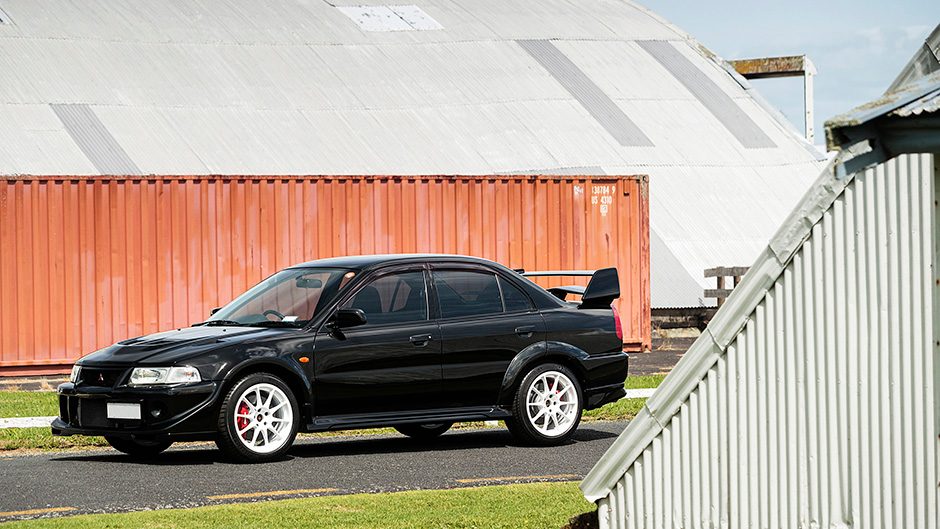
The Evo’s last win came in 2001 at the Safari Rally with Makinen at the wheel of the 6.5. That surely allows it to claim a stake as one of the greatest Group A cars ever, a point that could be argued until the pub ran dry.
Anyway, the upshot is the homologation process gave the world a great run of amazing road cars and New Zealand was lucky to be one of the few countries where the Evo was sold outside of Japan. One of those was the Tommi Makinen Edition, a special version of the Evo VI.
Announced in December of 1999, the limited run was to commemorate Tommi Makinen’s fourth consecutive drivers’ championship. It was priced at Y3,278,000 in Japan (for the GSR version) while our archives report it was $75,500 here. The 6.5 gained a few extras including a quicker steering ratio, lowered, ‘tarmac-tuned’ suspension while the turbo received a titanium compressor wheel designed to improve response and boost low-end torque production. There was also a strut tower brace and a new muffler.
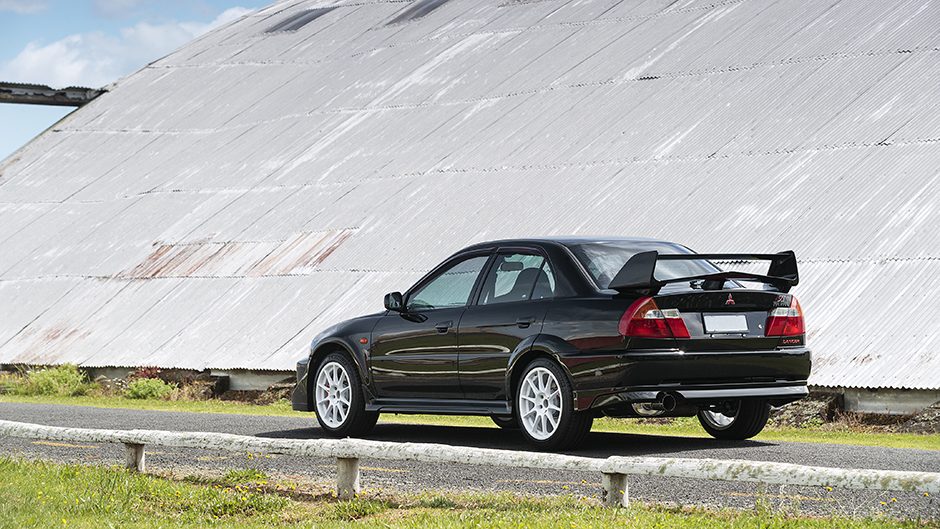
Looks wise they gave it a unique bumper to improve aeros and the 17s mimicked the design of the works car. Available in blue, white, silver and black, the Passion Red cars alone received Ralliart decals, making them the fastest of the 6.5s. Inside the Recaros were trimmed in red and suede with the Tommi Makinen logo on the back rest and the Momo steering wheel and gear knob gained red-stitched leather.
Like many of these Japanese cars from the nineties, prices have started to appreciate rapidly. And with just 2500 TMEs made, they are now getting harder to find in an ‘unmodified’ condition with buyers from the UK and the US driving the prices up at auctions in Japan. Bill Wilde, the owner of this black beauty bought it as something to enjoy with his son and grandchild. He’d been looking for one in the Japanese auctions for about six months before this black one turned up, which he managed to secure earlier this year.
He says he’s glad he did as values have risen substantially. He showed us another black TME similar to his that a UK buyer had just bought for an equivalent $NZ85k. He said one went recently in Australia for $120k, and a NZ-new Ralliart red version sold for $100k in Auckland last month. Rightly so he has this insured for over $70k now, about what is cost new, 20 years ago.
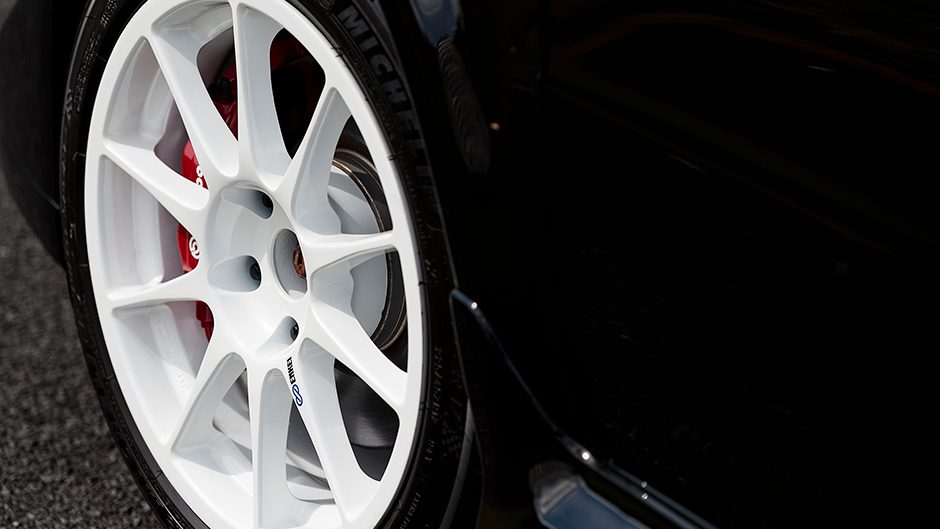
With 244 made, black is the rarest of the Makinens, and the owner thinks it might be the only black one in the country. He says the value is in the standard cars, while there is a bit of a movement happening to try and restore all the modified Evos around the country back to stock. But there’s not much left in the way of old parts, many of them having been discontinued now, and so spares are now expensive. Our owner reckons he can get a set of standard shockers for the TME, but are $5000 a set. As such, he’s starting to collect as many parts as he can find.
Bill complied this 6.5 under the Special Interest Vehicle scheme, and there wasn’t much that needed rectifying. It’s since had a full and thorough servicing from Ron at Road, Race and Rally in Auckland, who believes it’s definitely an unmolested model, the manifold and turbo having never been tinkered with.
The Evo’s special Active Yaw Control diff can give problems, but not this one, after a full service. When kept standard and well maintained, the Evo is pretty reliable but Lancers of this era can rust, so this has been undersealed and had a full cavity wax to keep the cancer at bay. The paint is apparently pretty average from the factory, yet this one shows only a few signs of its age. The owner reckons the front bumper and roof have been resprayed and he has had it ceramic coated to help maintain the ‘soft factory paint’ by Christian at Obsessive Car Detailing.
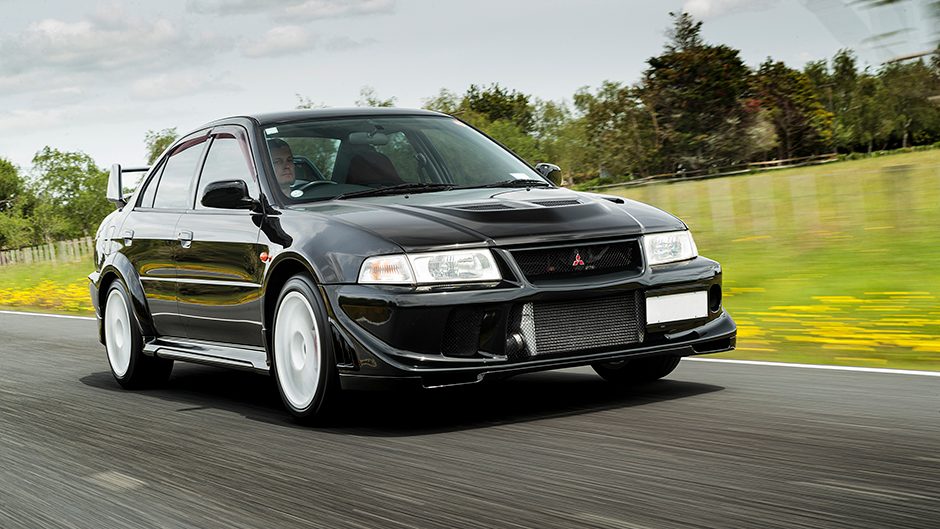
Initially, Bill was looking for a car to buy and put away. He could see the values creeping up and he wanted something from the nineties, having had cars like a Legacy RS, a couple of Mazda GT-Rs, Integra Type Rs and a Skyline GT-R in the family stable. He tossed up whether to buy a V4 STi Coupe, but then he’d always know there was a better Subaru out there, being the 22B. But with those all but unobtainable, he got on to the TME.
He believes that to be the last of the real Evos, though he knows people will argue that. But he likes the fact it was the last of the Group A cars, and Tommi Makinen was a real legend. Back in the day, the car would have been in for an exhaust and intake at the least, but he plans to keep it as is, and isn’t tempted to on sell it for the profit, as he says, ‘what would I replace it with?’ As such, he’s not too interested in track days but owning such an Evo has helped him reconnect with the car scene.
He kindly threw the keys our way for a quick burst up a well known hill road, perfect Evo country. We initially thought the Evo would ride like a skateboard, but harshness isn’t part of this deal. It ate up most bumps surprisingly well, though struggled over some of the sharper edges, giving the poor 20-year-old dampers a hard time. The rippled tarmac in corners taken in anger also expose the vintage of its body rigidity.
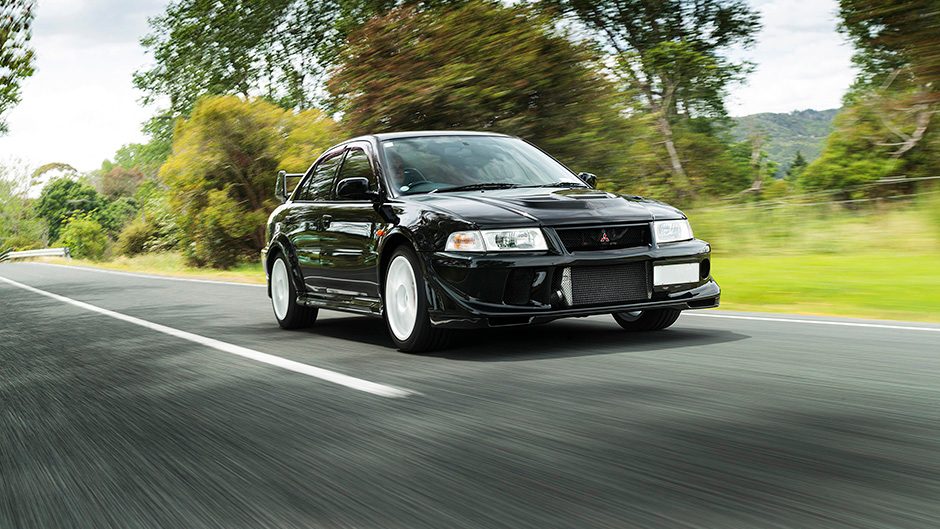
But there’s little in the way of bump steer, and no hint of power on understeer either, both the front Helical and rear AYC diffs working well to sort that, and the torque steer too. This can still carry some curry through a curve. It’s impressive how it responds to throttle inputs in the bends. In the sweepers, you can keep adding it in to get the rear end pushing you around, keeping the front from sledging wide. And when it starts to oversteer (in the true sense of the term, not sliding) a little less gas has it quickly back in line.
And it’s you and the mechanicals working together, rather than the electronics, which is something to relish. Despite the special steering ratio, it’s not too quick or darty, but does turn in sharply on command. The weighting is quite light, and feelsome, though suffers some kickback.
There’s enough power for the old Evo to still feel quick enough, it’s 1365kg weight helping. The boost ramps up around the 3000rpm mark, and it revs eagerly right around 7000rpm. The ratios in the five-speed box are stacked closely to keep the engine perky (100 in top equates to 3000rpm), and so the response is good, lag minimal.
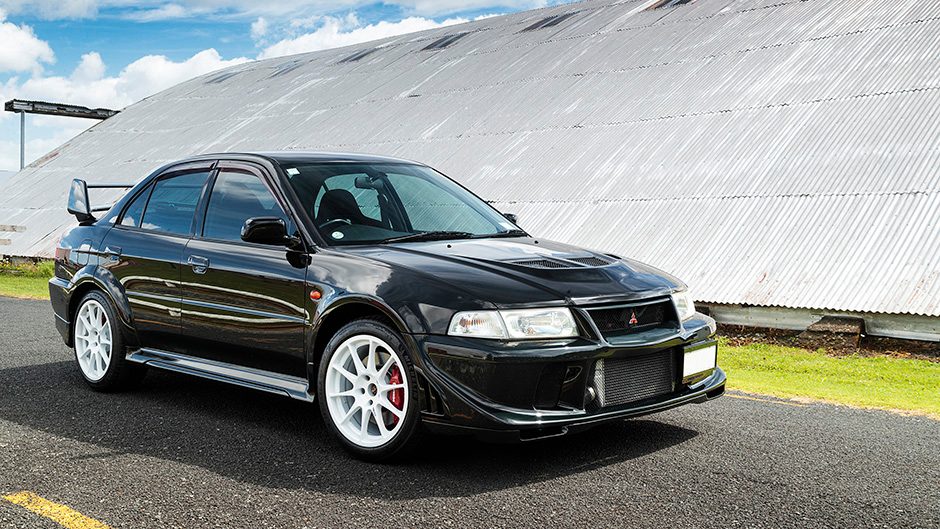
The gearbox is a little notchy with 20 years of action behind it, the throw not the slickest ever, but the gates are well spaced so it’s hard to miss the hole. The brakes stop it well, but as mentioned, it doesn’t feel heavy, or too weighty on the nose. It’s super agile this, and the way it can carve its way cross country still impresses 20 years on.
We should probably leave the last words to Tommi, who from the original press release said “The Lancer Evolution realises a beautiful balance between all performance parameters and it really provided me with the perfect car to re-write the WRC record book. I would just like to say that anyone who buys the Lancer Evolution has made the Right Choice”. Seems so now doesn’t it?


